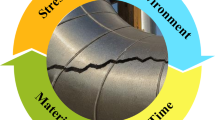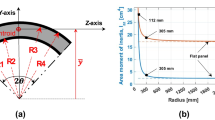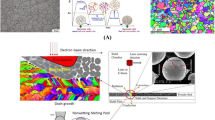Abstract
Numerous experimental investigations reported in the open literature over the past decade have clearly demonstrated that the use of polyurea external coatings and/or inner layers can substantially enhance both the blast resistance (the ability to withstand shock loading) and the ballistic performance (the ability to defeat various high-velocity projectiles such as bullets, fragments, shrapnel, etc. without penetration, excessive deflection or spalling) of buildings, vehicles, combat-helmets, etc. It is also well established that the observed high-performance of polyurea is closely related to its highly complex submicron scale phase-segregated microstructure and the associated microscale phenomena and processes (e.g., viscous energy dissipation at the internal phase boundaries). As higher and higher demands are placed on blast/ballistic survivability of the foregoing structures, a need for the use of the appropriate transient nonlinear dynamics computational analyses and the corresponding design-optimization methods has become ever apparent. A critical aspect of the tools used in these analyses and methods is the availability of an appropriate physically based, high-fidelity material model for polyurea. There are presently several public domain and highly diverse material models for polyurea. In the present work, an attempt is made to critically assess these models as well as the experimental methods and results used in the process of their formulation. Since these models are developed for use in the high-rate loading regime, they are employed in the present work, to generate the appropriate shock-Hugoniot relations. These relations are subsequently compared with their experimental counterparts in order to assess the fidelity of these models.









Similar content being viewed by others
References
A.J. Ryan, Spinodal Decomposition During Bulk Copolymerization: Reaction Injection Molding, Polymer, 1989, 31, p 707–712
C.M. Roland and R. Cassini, Effect of Hydrostatic Pressure on the Visco-elastic Response of Polyurea, Polymer, 2007, 48, p 5747–5752
Y.A. Bahei-El-Din, G.J. Dvorak, and O.J. Fredricksen, A Blast-Tolerant Sandwich Plate Design With a Polyurea Interlayer, Int. J. Solids Struct., 2006, 43, p 7644–7655
R.B. Bogoslovov, C.M. Roland, and R.M. Gamache, Impact-Induced Glass-Transition in Elastomer Coatings, Appl. Phys. Lett., 2007, 90, p 221910
M. Grujicic, B. Pandurangan, and B.A. Cheeseman, A Computational Analysis of Detonation of Buried Mines, Multidiscip. Model. Mater. Struct., 2006, 2, p 363–387
M. Grujicic, B. Pandurangan, and B.A. Cheeseman, The Effect of Degree of Saturation of Sand on Detonation Phenomena Associated with Shallow-Buried and Ground-Laid Mines, Shock Vib., 2006, 13, p 41–62
M. Grujicic, B. Pandurangan, Y. Huang, B.A. Cheeseman, W.N. Roy, and R.R. Skaggs, Impulse Loading Resulting from Shallow Buried Explosives in Water-Saturated Sand, J. Mater. Des. Appl., 2007, 221, p 21–35
M. Grujicic, B. Pandurangan, J.D. Summers, B.A. Cheeseman, and W.N. Roy, Application of the Modified Compaction Material Model to Soil with Various Degrees of Water Saturation, Shock Vib., 2008, 15, p 79–99
M. Grujicic, B. Pandurangan, I. Haque, B.A. Cheeseman, W.N. Roy, and R.R. Skaggs, A Computational Analysis of Mine-Blast Survivability of a Soft-Skin Vehicle, Multidiscip. Model. Mater. Struct., 2007, 3, p 431–460
M. Grujicic, B. Pandurangan, G.M. Mocko, S.T. Hung, B.A. Cheeseman, W.N. Roy, and R.R. Skaggs, A Combined Multi-Material Euler/Lagrange Computational Analysis of Blast Loading Resulting from Detonation of Buried Landmines, Multidiscip. Model. Mater. Struct., 2008, 4, p 105–124
M. Grujicic, B. Pandurangan, R. Qiao, B.A. Cheeseman, W.N. Roy, R.R. Skaggs, and R. Gupta, Parameterization of the Porous-Material Model for Sand with Different Levels of Water Saturation, Soil Dyn. Earthq. Eng., 2008, 28, p 20–35
M. Grujicic, B. Pandurangan, N. Coutris, B.A. Cheeseman, W.N. Roy, and R.R. Skaggs, Derivation and Validation of a Material Model for Clayey Sand for Use in Landmine Detonation Computational Analysis, Multidiscip. Model. Mater. Struct., 2009, 5(4), p 311–344
M. Grujicic, B. Pandurangan, N. Coutris, B.A. Cheeseman, W.N. Roy, and R.R. Skaggs, Computer-Simulations based Development of a High Strain-rate, Large-deformation, High-pressure Material Model for STANAG 4569 Sandy Gravel, Soil Dyn. Earthq. Eng., 2008, 28, p 1045–1062
M. Grujicic, B. Pandurangan, N. Coutris, B.A. Cheeseman, W.N. Roy, and R.R. Skaggs, Derivation, Parameterization and Validation of a Sandy-Clay Material Model for Use in Landmine Detonation Computational Analyses, J. Mater. Eng. Perform., 2010, 10(3), p 434–450
M. Grujicic, T. He, B. Pandurangan, W.C. Bell, N. Coutris, B.A. Cheeseman, W.N. Roy, and R.R. Skaggs, Development, Parameterization and Validation of a Visco-Plastic Material Model for Sand With Different Levels of Water Saturation, J. Mater. Des. Appl., 2009, 223, p 63–81
M. Grujicic, T. He, and B. Pandurangan, Development and Parameterization of an Equilibrium Material Model for Segmented Polyurea, Multidiscip. Model. Mater. Struct., 2011 (accepted)
M. Grujicic, W.C. Bell, B. Pandurangan, and T. He, Blast-Wave Impact-Mitigation Capability of Polyurea When Used as Helmet Suspension-Pad Material, Mater. Des., 2010, 31, p 4050–4065
M. Grujicic, W.C. Bell, B. Pandurangan, and P.S. Glomski, Fluid/Structure Interaction Computational Investigation of the Blast-Wave Mitigation Efficacy of the Advanced Combat Helmet, J. Mater. Eng. Perform., 2010, doi:10.1007/s11665-010-9724-z
M. Grujicic, B. Pandurangan, T. He, B.A. Cheeseman, C.-F. Yen, and C. L. Randow, Computational Investigation of Impact Energy Absorption Capability of Polyurea Coatings via Deformation-Induced Glass Transition, Mater. Sci. Eng. A, 2010, 527(29–30), p 7741–7751
M. Grujicic, B. Pandurangan, A.E. King, J. Runt, J. Tarter, and G. Dillon, Multi-length Scale Modeling and Analysis of Microstructure Evolution and Mechanical Properties in Polyurea, J. Mater. Sci., 2010, doi:10.1007/s10853-010-4998-y
M. Grujicic, B. Pandurangan, W.C. Bell, B.A. Cheeseman, C.-F. Yen, and C.L. Randow, Molecular-Level Simulations of Shock Generation and Propagation in Polyurea, Mater. Sci. Eng. A, 2011, doi:10.1016/j.msea.2011.01.081
A.V. Amirkhizi, J. Isaacs, J. McGee, and S. Nemat-Nasser, An Experimentally-Based Viscoelastic Constitutive Model for Polyurea, Including Pressure and Temperature Effects, Philos. Mag., 2006, 86, p 5847–5866
The Dow Chemical Company, Isonate® 143L; Modified MDI (Dow Chemical, Midland, MI, 2001)
Air Products Chemicals, Inc., Polyurethane Specialty Products (Air Products and Chemicals, Allentown, PA, 2003)
J. Yi, M.C. Boyce, G.F. Lee, and E. Balizer, Large Deformation Rate-dependent Stress-Strain Behavior of Polyurea and Polyurethanes, Polymer, 2006, 47, p 319–329
C.M. Roland, J.N. Twigg, Y. Vu, and P.H. Mott, High Strain-Rate Mechanical Behavior of Polyurea, Polymer, 2007, 48, p 574–578
S.S. Sarva, S. Deschanel, M.C. Boyce, and W. Chen, Stress-Strain Behavior of a Polyurea and a Polyurethane from Low to High Strain Rates, Polymer, 2007, 7(48), p 2208–2213
H.J. Qi and M.C. Boyce, Stress-Strain Behavior of Thermoplastic Polyurethanes, Mech. Mater., 2005, 37, p 817–839
C. Li and J. Lua, A Hyper-Viscoelastic Constitutive Model for Polyurea, Mater. Lett., 2009, 63, p 877–880
R.W. Ogden, Large Deformation Isotropic Elasticity—On the Correlation of Theory and Experiment for Incompressible Rubberlike Solids, Proc. R. Soc. Lond. A, 1972, 326, p 565–584
T. Jiao, R.J. Clifton, and S.E. Grunschel, Pressure-Sensitivity and Constitutive Modeling of an Elastomer at High Strain Rates, 16th APS Topical Conference on Shock Compression of Condensed Matter, June 28–July 3, 2009
M. Grujicic, T. He, B. Pandurangan, J. Runt, J. Tarter, and G. Dillon, Development and Parameterization of a Time-invariant (Equilibrium) Material Model for Segmented Elastomeric Polyureas, J. Mater. Des. Appl., 2011 (accepted)
E.M. Arruda and M.C. Boyce, A Three-dimensional Constitutive Model for the Large Stretch Behavior of Elastomers, J. Mech. Phys. Solids, 1993, 41, p 389–412
T.M. El Sayed, “Constitutive Models for Polymers and Soft Biological Tissues,” Ph.D. Thesis, California Institute of Technology, 2008
M. Ortiz and A. Molinari, Effect of Strain-Hardening and Rate Sensitivity on the Dynamic Growth of a Void in a Plastic Material, J. Appl. Mech. Trans. ASME, 1992, 59(1), p 48–53
K. Weinberg, A. Mota, and M. Ortiz, A Variational Constitutive Model Porous Metal Plasticity, Comput. Mech., 2006, 37, p 142–152
ABAQUS version 6.9, User Documentation, Dessault Systems, 2007
W. Mock, S. Bartyczak, G. Lee, J. Fedderly, and K. Jordan, Dynamic Properties of Polyurea 1000, Shock Compression of Condensed Matter, American Institute for Physics, 2009, p 1241–1244
L. Davison, Fundamentals of Shock-Wave Propagation in Solids, Springer, Heidelberg, Berlin, 2008, ISBN: 978-3-540-74568-6
Acknowledgments
The material presented in this article is based on work supported by the Office of Naval Research (ONR) research contract entitled “Elastomeric Polymer-By-Design to Protect the Warfighter Against Traumatic Brain Injury by Diverting the Blast Induced Shock Waves from the Head,” Contract Number 4036-CU-ONR-1125 as funded through the Pennsylvania State University. The authors are indebted to Dr. Roshdy Barsoum of ONR for continuing support and interest in the present work.
Author information
Authors and Affiliations
Corresponding author
Appendix: Split Hopkinson Pressure Bar
Appendix: Split Hopkinson Pressure Bar
The SHPB setup is used for determination of the high-strain-rate (unconfined or confined) compression stress versus strain data. As schematically represented in Fig. A1, an SHPB setup consists of a striker bar, an incident bar, the specimen being tested and the transmitter bar. A rectangular compression wave of well-defined amplitude and duration is generated in the incident bar when the incident bar is struck by the striker bar. When the wave reaches the incident bar/specimen interface, it is partially transmitted into the specimen (and subsequently) into the transmitter bar, and partially reflected back to the incident bar.
Using a one-dimensional wave propagation analysis, it is possible, as shown below, to determine high-strain rate stress-strain curves from measurements of the temporal evolution of strain in the incident and transmitter bars.
Propagation of waves along the length of the bar (x direction) is, to a good approximation, governed by the one-dimensional wave equation:
which has the solution within the incident bar:
where u i is the incident wave, u r is the reflected wave, c is the speed of propagation of the wave, t time and z 1 and z 2 are single variables that f and g depend on, respectively. The corresponding axial strain in the incident bar is then defined as:
Substituting Eq A.3 into Eq A.2 yields:
The velocity of any material point in the incident bar can be determined by differentiating Eq A.2 with respect to time as:
In the case of the transmitter bar, there is only one wave, the transmitted wave, propagating through it (until the wave reflects at the free end of the transmitter bar, which takes place at a post data-collection time). Therefore, the velocity of the material points within the transmitter bar is obtained by differentiating, with respect to time, displacement field \( u(t) = h(z_{1} ) = h(x - ct) \) as:
The strain rate in the specimen is next calculated as:
where l s is the instantaneous length of the specimen and subscripts I/S and S/T are used to, respectively, denote the velocities of the incident bar/specimen, Eq A.5 and the specimen/transmitter bar, Eq A.6, interfaces. Combining Eq A.5, A.6, and A.7, the instantaneous (average) strain rate in the specimen can be calculated from the measured time-dependent strains in the incident and the transmitter bars as:
The corresponding strain in the specimen can be obtained by integrating over time the specimen strain rate.
To determine the axial stress in the specimen, the forces in the incident and transmitter bars are first determined. Since the two bars are deformed elastically, the corresponding forces are defined as:
where A and E are, respectively, used to denote the cross-sectional area and the Young’s modulus of the incident (I) and the transmitter (T) bars.
The SHPB analysis presented here is based on the following two assumptions:
-
(a)
after some initial ringing, the specimen is deformed uniformly. This assumption was already used in the case of Eq A.7; and
-
(b)
the specimen is in the state of dynamic equilibrium, i.e., the forces acting at the I/S and the S/T interfaces are equal.
Under the conditions A I = A T and E I = E T, this assumption via Eq A.9 and A.10 yields:
Substituting Eq A.11 into Eq A.8 yields:
suggesting that the specimen strain rate can be determined solely from the measured strains associated with the reflected wave within the incident bar.
The corresponding stress in the specimen is then calculated by dividing the force in the sample by the sample cross-sectional area as:
Equation A.13 was obtained using Eq A.10. The same could be done using Eq A.11 or a mean of the Eq A.11 and A.12.
Rights and permissions
About this article
Cite this article
Grujicic, M., He, T., Pandurangan, B. et al. Experimental Characterization and Material-Model Development for Microphase-Segregated Polyurea: An Overview. J. of Materi Eng and Perform 21, 2–16 (2012). https://doi.org/10.1007/s11665-011-9875-6
Received:
Published:
Issue Date:
DOI: https://doi.org/10.1007/s11665-011-9875-6





